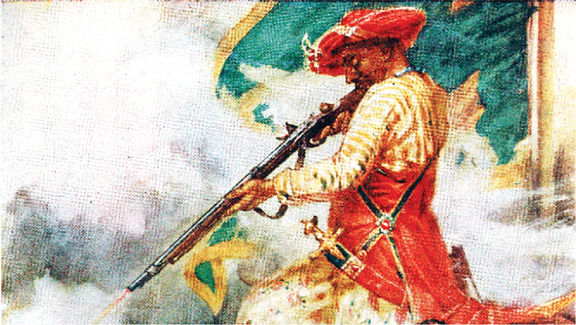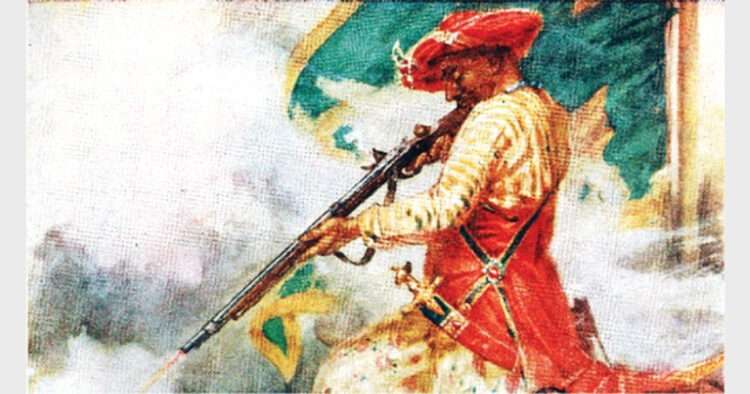 The bloodbath and brutalities scripted by Tipu Sultan form one of the darkest periods of Bharat’s history. It is time he is shorn of the glory heaped on him
The bloodbath and brutalities scripted by Tipu Sultan form one of the darkest periods of Bharat’s history. It is time he is shorn of the glory heaped on him
Mukkatira Mac Thimmaiah
“Most history textbooks hail Tipu Sultan as the Tiger of Mysore and have associated him with refutable feats. Marxist historians, media and successive governments for the sake of appeasing their vote banks have hidden the atrocities carried out by Tipu on Kodavas and the people of Malabar. It is indeed shameful that the Karnataka government has been adamant in observing the ‘jayanti’ of such a tyrant.”
Tall, well-built, brave, beautiful and courageous are just a few words commonly used to describe the Kodavas of Karnataka. The history of Kodavas is definitely one of the most fascinating in the history of India. However, Kodavas today are regarded as one of the least populated races in this world and barbarism of Tipu is considered as the reason for the same.
There were repeated attempts to capture Kodagu by Tipu and by his father, Hyder Ali, before him. Tipu’s barbarism reached its peak between 1760 and 1790. This period is
considered as one of the most gruesome eras in the history of Kodavas. Tipu’s closest commander Mir Kirmani, in his work ‘Nishan-e-Haidari’, reveals Tipu’s brutality and his religious fanaticism. During this period, Tipu destroyed more than 600 temples across Kodagu, massacred and converted lakhs of Kodavas.
Tipu first invaded Kodagu with his well-equipped army of 15000 men carrying French cannons and aimed to conquer Kodagu overnight. But the brave warriors of Kandanda Doddaiah and Appachira Mandanna and their troop of only 5000 Kodavas retaliated against Tipu’s army near Suntikoppa, defeated and chased Tipu’s army out of Kodagu. This war with Tipu is documented in Hunsoor literature which states “Kari Kupasu to the Kodavaru Kari Dumbhi the Tipuvinatha nugi, hodedhodisidharu” (Kodavas wearing black vests, charging like black bees, defeated and drove away Tipu). Historians say this was a war of bravery versus strength and by the time Tipu realised the courage of Kodava’s he was defeated. Tipu popularly known and projected today as Tiger of Mysore and pride of Karnataka was defeated by Kodava kings 31 times during 25 years of war and this humiliation forced Tipu to seek revenge on Kodavas. Kodavas were the masters of the guerrilla warfare and hence succeeded in thwarting Tipu’s attempts to capture Kodagu.
Destruction of Temples
It was 1771. Tipu again attacked the Madikeri fort post with a large army and captured Bhagamandala. He converted the entire Bhagandeshwara temple and its premises to a fort. Documents available with the temple narrate how Tipu ordered the massacre of the temple Elephants. As a tribute to himself, Tipu placed a stone titled “Salam Kallu” which can be seen on way to Talacavery even today. After 15 years of war and retaliation with Kodavas, Tipu understood he would not be able to capture entire Kodagu which would provide him easy access to Mangalore port. Tipu wanted to try something different, which resulted in one of the biggest genocides in history.
Tipu sent a message to ‘naal naad Kodavas’ inviting them for a negotiation stating his main enemies were Marathas and the British, hence he would want to end the war with Kodava and head back to Srirangapatana. Learning about the invite Kodavas from ‘naal naad’ gathered with their family on December 13, 1785, at Devatiparambu located on banks of the river Cauvery to negotiate and bring a halt to the decade-long war. As the sun set behind the mountains of Kodagu, the unarmed Kodava chieftains came to Devatiparambu. Meanwhile, as part of Tipu’s cowardly plan, half of his army was deployed inside the forest waiting for Kodavas to congregate. Once Tipu was sure he had the unarmed Chieftains trapped, he ordered his army to massacre all the Kodavas present at Devatiparambu. Troops hiding behind the bushes pounded on unarmed men, women and kids and mercilessly slaughtered more than 70,000 and captured about 90,000 Kodavas who were then deported to Seringapatam.
The captured women and children’s were subjected to immense physical and mental torture including forcible conversions to Islam. Those who didn’t relent for conversion were brutally murdered. Young men were forcibly circumcised and incorporated into the Ahmedi Corps (name of Tipu’s army). Local folklore suggests that the scale of Devatiparambu massacre was so huge that the water in the Cauvery river turned red due to blood oozing out of the dead bodies and continued to flow red for 12 consecutive days. Many who converted to Islam were sent back to Kodagu who came to be known as Kodava Mapilas. There are about 60 Kodava Mapilas families residing in Kodagu. The Kodava Mapilas, whose lifestyle, several customs and attires match those of other Kodavas, are a standing testimony to the barbarism meted out on the people of Kodagu by Tipu Sultan.
Tipu believed in destroying temples in Kodagu. During his course of destruction, he happened to destroy Bhagavadhi temple near Kotakeri and burnt the Biddatanda Ainmane where he captured 48 innocent people and took them along to Seringapatam. Among these 40 people, Appanna
managed to escape and returned to his village in Kodagu. However, Appanna was outcast since villagers thought he converted to Islam. Appanna lived alone till death near a pond which is called Appannajjanda Kere. The pond can be found even today. The remains of the Biddatanda Ain-Mane which was burnt with people inside shouting for help, narrates the ghastly actions meted out to the common people by Tipu and his brigade. After capturing the Madikeri Fort, Tipu ordered the removal of the Kalasa (peak of a temple) from the Omkareshwara temple and replaced it with a dome. There are similar instances of temple destruction and vandalism carried out by Tipu.
Tipu Against Kannada
Tipu also wanted to abolish Kannada completely and hence introduced the Persian language into his administration. The Persian words like “Dhapan, Barcas and Jammabandi” used in land documents in Kodagu even today demonstrate the hatred Tipu had for Kannada and the local dialects of Kodagu. It’s an irony that the Congress regime celebrates a Kannada-hating monarch’s birth anniversary across the state in the same month which observes its foundation day.
Evidence for the bloodiest chapter of Kodagu and Kodavas history exists even today and is well documented. It is a chapter full of brutality, violence and genocide. An attempt is being made by the politicians of the day to rewrite history and lionize a mass murderer and project him as a freedom fighter only for the sake of vote bank politics. The
government’s adamant attitude to celebrate a tyrant would not only hurt the sentiments of Kodavas but also send out a false message to the future generation of our nation. A man who lost in battles 31 times and managed to massacre the brave Kodava warriors through deceit can never be a Hero. Tipu was an invader, a dictator, a coward and a tyrant. Glorifying such barbaric despots for political gains is an absolute shame and disgrace to humanity.
(The writer is a political commentator, specialises in History of Kodagu)














Comments